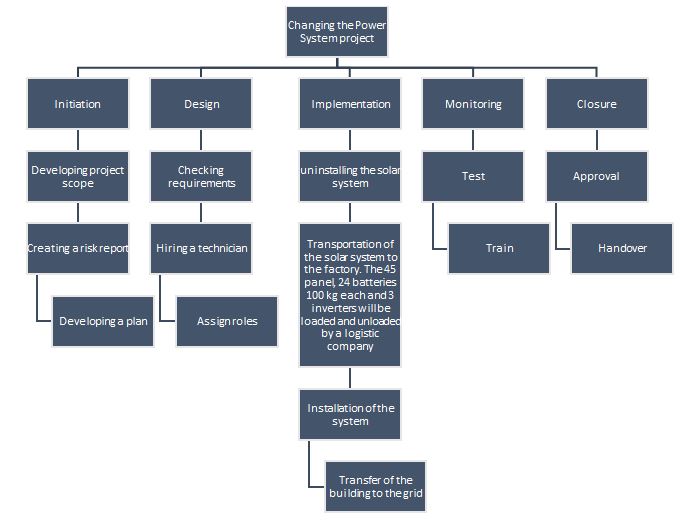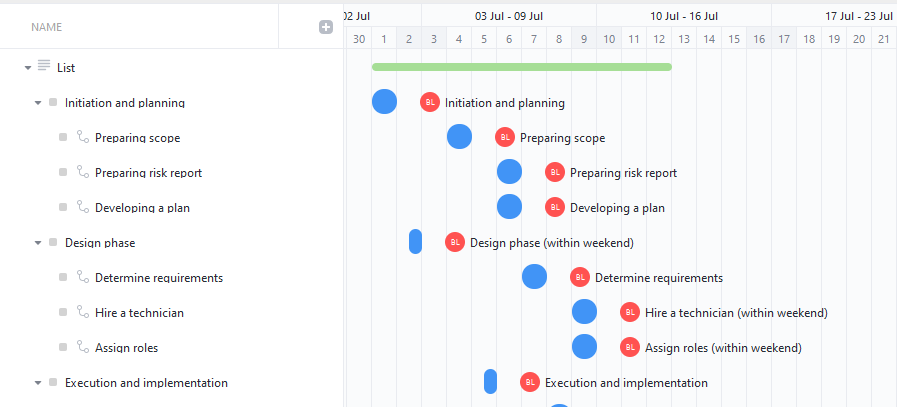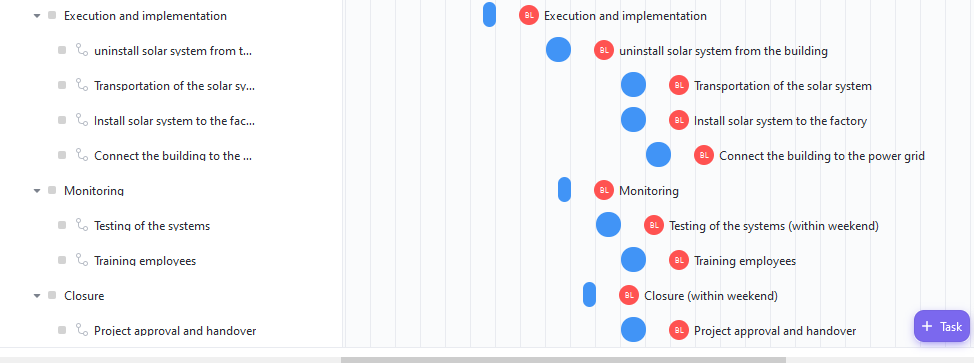Introduction
The project is directed to the factory owner Mr. Smith, Easy Life Water Ventures employees, and occupants of the building in the Central Business District (CBD) of Lagos state. Adopting a sustainable and reliable source of energy will enable the organization to become productive. For example, it will help the company solve the current stalemate caused by the rising cost of diesel, which increases the cost of production and, ultimately, the cost of its products. Therefore, having an effective power source will help the organization operate smoothly and sustainably and increase its reputation.
Organization Introduction
Easy Life Water Ventures is a company that operates in the water sector and based in Nigeria. The organization is situated in Ayobo, Lagos State, and is owned by Mr. Smith. In addition, it majors in producing affordable drinking water for people living in the rural suburbs of Lagos. The organization packages its water in three different packs and sachets. These include 50cl Sachet Water, 75cl Bottle, and 19 Litre jar. Due to the lack of power from the National Grid, the organization opted to use diesel to generate power. As a result, the main purpose of Easy Life Water Venture is to produce clean and cost-effective water for drinking.
Project Scope
The project involves the removal, replacement, and installation of power systems. The diesel generator currently supplying power at Easy Life Water Ventures will be replaced with the solar system used in the building at the CBD. In addition, due to the location of the building, they will be connected to the National Power Grid. The project was informed by the need to ensure that the organization has access to a reliable and cost-effective source of power to run its operations effectively. Thus, the project exists to ensure that the company gets a reliable and sustainable to support the production of affordable drinking water.
Project Objectives
The following objectives define what the project intends to deliver by the end of one week:
- The project will relocate the 45 solar panels from the roof of the building located in the CBD, 24 two volts Batteries, and three-five KVA inverters to power operations at the factory at Ayobo.
- It will examine the factory’s power consumption to determine whether the solar system will power the operations.
- The project will relocate the resident of the building at CBD to the National Power Grid, which is available on the street.
Project Inclusions and Deliverables
The project inclusions are as follows:
- Initiation: terms of reference and scheduling.
- Design: Creation of a project plan.
- Execution: relocation of power systems.
- Monitoring and control: training of employees.
- Closing: handing over the project.
- Follow-up: maintenance of the project to ensure it operates effectively.
The deliverables for this project are as follows:
Table 1: Deliverables
Exclusions
The project will not include maintenance of the project after the closure and handover phase. Exclusions are project items and activities that are not included in the scope (Pheng, 2018). It will not involve any repairs and operations performed beyond the project life. For example, the project will not engage in activities geared towards the effective running of operations after closure. The scope of the project does not include change management operations. The organization’s managers and leaders will mandate to ensure that the change is embraced.
Duration and Milestones
The duration of this project is one week from inception to completion. Project duration is the time taken to complete a project (Kerzner, 2018). The project’s planning and design will occur within the first two days after initiation. This will help develop an elaborate plan for the implementation and launching of the execution phase. The actual implementation of the project will take place in three days, where the two relocations will be done to avoid the impact of the disruption. The monitoring and control phase will occur three days a week. This will include activities such as training employees working at the factory. The final day will involve handing over the projects to the owners.
Project Constraints
- Time: the project must be completed within one week.
- Financial resource: the project must be done within a budget of $1,250.
Key Stakeholders
- Mr. Smith owns the factory and the building.
- Employees of the factory.
- Residents of the two-storey building
- A trainer.
- Power technicians.
Critical Success Factors
- The installed solar system is effectively running the operations of the factory.
- The installed power from the National Power Grid is working effectively.
Business Case
Overall Purpose
This project aims to ensure that the factory has a reliable, sustainable, and adequate power supply. This will be important for the company to achieve a competitive advantage in the market. For example, the project will assist the organization in solving the rising cost of production due to the increase in the price of diesel. As a result, the company can produce affordable products for the market. In addition, it will enable the organization to become sustainable because of the reduction of carbon emissions and dependence on diesel generators by 50%. Therefore, this project’s primary aim is to increase the organization’s productivity and make its operations sustainable.
Products
The products produced in this project are:
- The relocation of the solar system from the second flow of the building to the factory.
- The installation of power from the National Power Grid from the street to the building located in the CBD.
Current Business
Easy Life Water Ventures is facing a constant increase in production costs due to rising diesel costs. Currently, the factory is using a diesel generator which is not cost-effective because it is causing a rise in the prices of products. Based on this, the organization becomes uncompetitive in the market because customers are likely to buy low-cost products (Hoffmann et al., 2018). Apart from this, using diesel to produce power is not environmentally sustainable. The emissions from the generator pollute the environment. Therefore, the organization is facing the risk of a high cost of production due to the increase in the cost of diesel.
Strategy
The strategy to tackle the problem is adopting cost-efficient and sustainable energy resources. To solve the rising cost of production, there is a need to replace the current diesel generator with a renewable and cost-effective solar system. This will assist reduce the organization’s dependence on the generator and lower the cost of production. In addition, the strategy will make the organization sustainable due to the reduced emission of greenhouse gases to the environment (Kabir et al., 2018). As a result, to solve the problem identified, the project must ensure that solar energy becomes the main source of power for the factory.
Solution
The existence of the solar system as the primary energy source driving the organization’s operations will reduce production costs and enhance environmental sustainability. As a result, the factory will be able to produce low-cost products in the market and attain a competitive advantage over its competitors (Hoffmann et al., 2018). This shows that the current rise in the cost of diesel caused by the ongoing war between Russia and Ukraine will not have an impact on the organization. Therefore, the project will make the company competitive and increase its reputation due to sustainable operations.
Costs
Project costs are the total funds required to finance all the operations from the start of the project to completion. As established, this project will involve monetary costs, and the expected budget to run the operations is $1250. However, the cost of operations is anticipated not to exceed the stated budget. The main costs of this project would be to hire power technicians to help relocate the solar system and facilitate the connection of the building to the National Power Grid. The other cost will be logistics to transport the solar system from the CBD Lagos State to Ayobo. The following is the breakdown of all the items and costs estimated to complete the project and achieve the stated objectives.
Table 2: Financial Costs
Non-Financial Costs
- Disruption of operations.
- Noise during the removal and installation of the solar system.
Benefits
The project has financial and non-financial benefits for the organization. Financial benefits include a reduction in the cost of production (Hasan et al., 2019). The cost of buying diesel will reduce due to the dependence on the generator as the main power source. In addition, with a decrease in the cost of production leading to more sales, there will be an increase in revenue (Mohamed, 2018). Non-financial benefits consist of improvement of the company’s image, high levels of customer satisfaction, and advantages that comes with being sustainable. Therefore, after this project’s completion, the company will likely gain monetary and non-monetary benefits.
Next Steps
- The follow-up for this project would be to make solar power system the main source of energy for the factory.
- The current solar system should be upgraded to make sure that it supports the operations of the company.
Feasibility
Options
Table 3: Options
Test Results
There are several options that the project would have implemented to solve the problem effectively. Currently, the 15 KVA from the solar power system would not support the 18 KVA requirement to run the operations at the factory. However, due to the financial constraint, purchasing an additional solar system to supplement the current is not viable. Therefore, for purposes of meeting project goals, it is important to concede to the minimal version of the project and propose the improvement of the solar system to support operations and complete dependence.
Risks
Threat Analysis
Table 4: Risk Register
Project Plan
Major Work Packages
Table 5: Crucial Stages
Work Breakdown Structure

Quality
The quality of the products developed will be determined using performance metrics and functionality. The relocated solar power system’s efficiency will be measured by its ability to run the factory’s operations. For example, it should be able to supply power amounting to 15 KVA to the factory. The quality of the power from the National Power Grid will be determined by checking whether the resident of the building have power or not.
Communications
Table 6: Communication Tools and Frequency of Contacts
Change Control
The project manager will manage some changes in the project. The changes in the scope and objectives will be addressed in a meeting with all stakeholders impacted (Giri, 2019). This will make sure that everyone is engaged in understanding the changes. Major stakeholders will address the alteration to the project’s deadline in the project. In addition, any changes to the budget will be conducted by the project sponsor.
Miscellaneous
Assumptions
- It is assumed that there will be enough sunlight for a constant power supply to the factory.
- It is assumed that the project will be completed within the set duration, scope, and budget.
Other related projects
- Installation of a solar power system to an organization.
- Relocation of power from the National Power Grid to solar system.
Reference List
Buganová, K. and Šimíčková, J. (2019) ‘Risk management in traditional and agile project management,’ Transportation Research Procedia, 40, pp.986-993. Web.
Giri, O.P. (2019) ‘Study on the role of a project manager in improving the project performance,’ Technical Journal, 1(1), pp.133-139. Web.
Hasan, M.M., Nekmahmud, M., Yajuan, L. and Patwary, M.A. (2019) ‘Green business value chain: A systematic review,’ Sustainable Production and Consumption, 20, pp.326-339.
Hoffmann, W., Lavie, D., Reuer, J.J. and Shipilov, A. (2018) ‘The interplay of competition and cooperation,’ Strategic Management Journal, 39(12), pp.3033-3052. Web.
Johansen, A., Olsson, N.O., Jergeas, G. and Rolstadås, A. (2019) Project Risk and Opportunity Management: The Owner’s Perspective. Routledge.
Kabir, E., Kumar, P., Kumar, S., Adelodun, A.A. and Kim, K.H. (2018) ‘Solar energy: Potential and future prospects,’ Renewable and Sustainable Energy Reviews, 82, pp.894-900. Web.
Kerzner, H., (2018) Project management best practices: Achieving global excellence. John Wiley & Sons.
Mohamed, M. (2018) ‘Challenges and benefits of industry 4.0: An overview,’ International Journal of Supply and Operations Management, 5(3), pp.256-265. Web.
Pheng, L.S. (2018) Project Management for the Built Environment. Springer, Singapore.
Raouf, A., & Al-Ghamdi, S. G. (2019) International Conference on Sustainable Infrastructure 2019: Leading Resilient Communities through the 21st Century. Reston, VA: American Society of Civil Engineers.
Appendix
Gantt Chart

